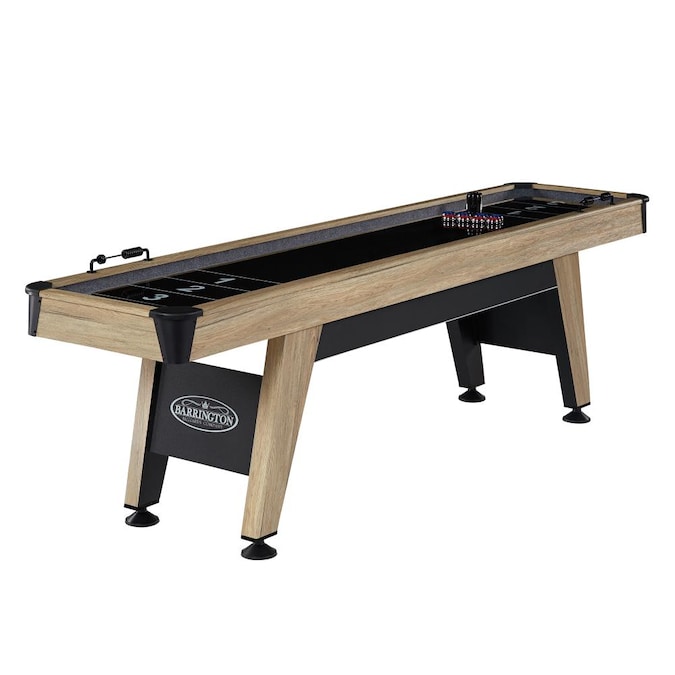
Playing pickleball requires you to be a positive force on court. Whether you're a beginner or veteran player, you should always be ready to react to any situation. This strategy is important because it involves keeping your partner in the loop. To keep the game going, it's important to communicate with your spouse. If you feel your opponent is losing, it is important to communicate with them.
A stagger strategy is one of the most effective pickleball strategies. This strategy allows your teammates to cover the whole court. Moving together will increase your chances of preventing your opponent from reaching the net. It's a great strategy to increase your team’s chances of winning.
Drop shots are a great way of getting back in the right position. It can be difficult to execute. Take the time to properly prepare and execute the shot. Make sure you are ready to return the ball in the right manner.

Another pickleball tip: Hit to your opponent’s backhand. Although this can be difficult to do, it can be very advantageous if you keep your opponent on their toes. To avoid bending your knees, keep your elbow and wrist straight.
This is also a fun shot. If your opponent is playing a slow game, you can keep them in the middle of the court and take the lead in the match. It's obvious that this is the best shot in the game. However, if your opponent doesn’t follow through with theirs, you won’t be able to hit it to your target.
Try hitting the ball backhand to your opponent if you have difficulty hitting the ball right. You will be able to stop the ball from bouncing off your opponent's backhand and into the net. This will make it easier for your opponent respond.
The lob is one of pickleball's most used shots. Most players don't even think about hitting a lob, but it can be an excellent way to snag the ball. Taking the time to practice your lob will ensure you'll have more success in the game.

You can also pickleball tip #2: Recognize your opponent's weaknesses. This will allow for you to score more and win more games. For example: If you are in a match against a weaker opponent, it is a good idea to give him or her hard shots such a drop shot. If your opponent is pushing your advantage, you can play the opposite side and hit a nicelob.
Finally, if you're playing a doubles match, you should consider a stagger strategy. Both players must be equally placed with their feet backwards. This will give the team the best chance of covering the middle court.
FAQ
Can I eat while I exercise?
Yes. Yes. Low-calorie snacks like watermelon and carrots, celery apples, bananas, grapes, celery, celery, celery, celery, celery, apple, bananas, and carrots are best. These foods provide nutrients that improve your performance during exercise.
Exercise can I help me lose weight
Yes. Regular exercise can help you shed extra calories and lose weight. Exercise also helps keep your metabolism up, so you continue to burn calories even when you aren't exercising.
How does caffeine impact my sleep?
Caffeine can affect how quickly you fall asleep, and how well you sleep. Caffeine induces drowsiness which makes it easier to fall asleep. However, caffeine can keep you awake longer and make it more difficult to fall asleep. Try drinking energy drinks and coffee before bed.
What does exercise do for your body?
Exercising helps you lose weight, build muscle mass, increase energy levels, reduce stress, and improve sleep quality. The benefits of exercise include improved moods, better self-esteem, increased productivity, and reduced risk of heart disease.
How can I start with fitness?
Start small! Take 10 minutes each day to walk around your block. This will allow you to learn the basic movements and give your body time to adjust to the new routine. Once you've mastered this simple form of exercise, try adding more steps to your daily routine.
What Are Resistance Training Exercises?
Resistance training involves using weights or other objects to perform specific movements. Lifting weights helps strengthen your arms, shoulders, chest and back, as well as your legs, hips, and core. Resistance training increases muscle mass, bone density, and overall strength.
Statistics
- Globally, 81% of adolescents aged 11-17 years were insufficiently physically active in 2016. (who.int)
- In 2018, the World Health Assembly agreed on a global target to reduce physical inactivity by 15% by 2030 and align with the Sustainable Development Goals. (who.int)
- In high-income countries, 26% of men and 35% of women were insufficiently physically active, as compared to 12% of men and 24% of women in low-income countries. (who.int)
- Globally, 28% of adults aged 18 and over were not active enough in 2016 (men 23% and women 32%). (who.int)
External Links
How To
How To Burn Belly Fats Faster
When trying to lose weight, belly fat is often viewed as a problem. However, Belly Fat can be beneficial if you really think about it. It's the amount of fat stored around your stomach that protects your organs from getting damaged. Let's find out how to lose belly fat quickly.
The two main factors that make us store body fat are stress and lack of exercise. Because stress stimulates the release of cortisol hormone, it makes us hungry all the time. Cortisol can increase insulin levels in the blood. The insulin stores the excess calories as fat. The release of adrenaline from our bodies causes increased appetite. These extra calories can also be reduced by exercise
There are many methods to lose belly fat. All of these methods can be used, depending on your budget. These are some great tips to help you lose belly fat fast.
-
Reduce the amount of food you eat. You should eat smaller meals throughout the day than you would if you ate three big meals. You will eat less calories in general.
-
Drink plenty of water. Water helps flush out toxins from the body and keeps you hydrated. Drinking water before meals will help you feel fuller for longer, so you don't overeat.
-
Avoid unhealthy snacks. If you're looking for quick fixes, snack foods like chips, cookies, candies, etc. might seem tempting. These sugary treats have lots of empty calories so avoid them. Choose healthier alternatives such as whole grains, vegetables, fruits, seeds, nuts and seeds.
-
Strength training should be done at least three times per week. Strength training helps build muscle mass, which means that you can burn more calories even when you are resting. Strengthening your bones, muscles as well ligaments, joints, tendons, heart and lungs.
-
Stretching and walking are good habits. Stretching improves flexibility and mobility which can reduce back pain. Walking is great for burning calories.
-
Reduce alcohol intake. Avoid alcohol.
-
Reduce your weight gradually. To lose weight, the first step is to determine what your current weight. Add 5%-10% of your total bodyweight to calculate your ideal size. Once you have determined your ideal weight, you can start to reduce your calorie intake by 500-1000 calories per day until you reach it.
-
Avoid processed foods. These foods are high-in salt, sugar, as well as preservatives. Even though they can be very convenient, these foods lack sufficient nutrients to support your health.
-
Don't skip breakfast! A good breakfast can improve concentration, memory, as well as energy level. Protein (like eggs), fiber and complex carbohydrates (like oatmeal) should be included in breakfast.
-
Have regular bowel movements. Constipation and irregularity can cause gas and bloating. To prevent this, drink plenty of water and increase fiber intake.